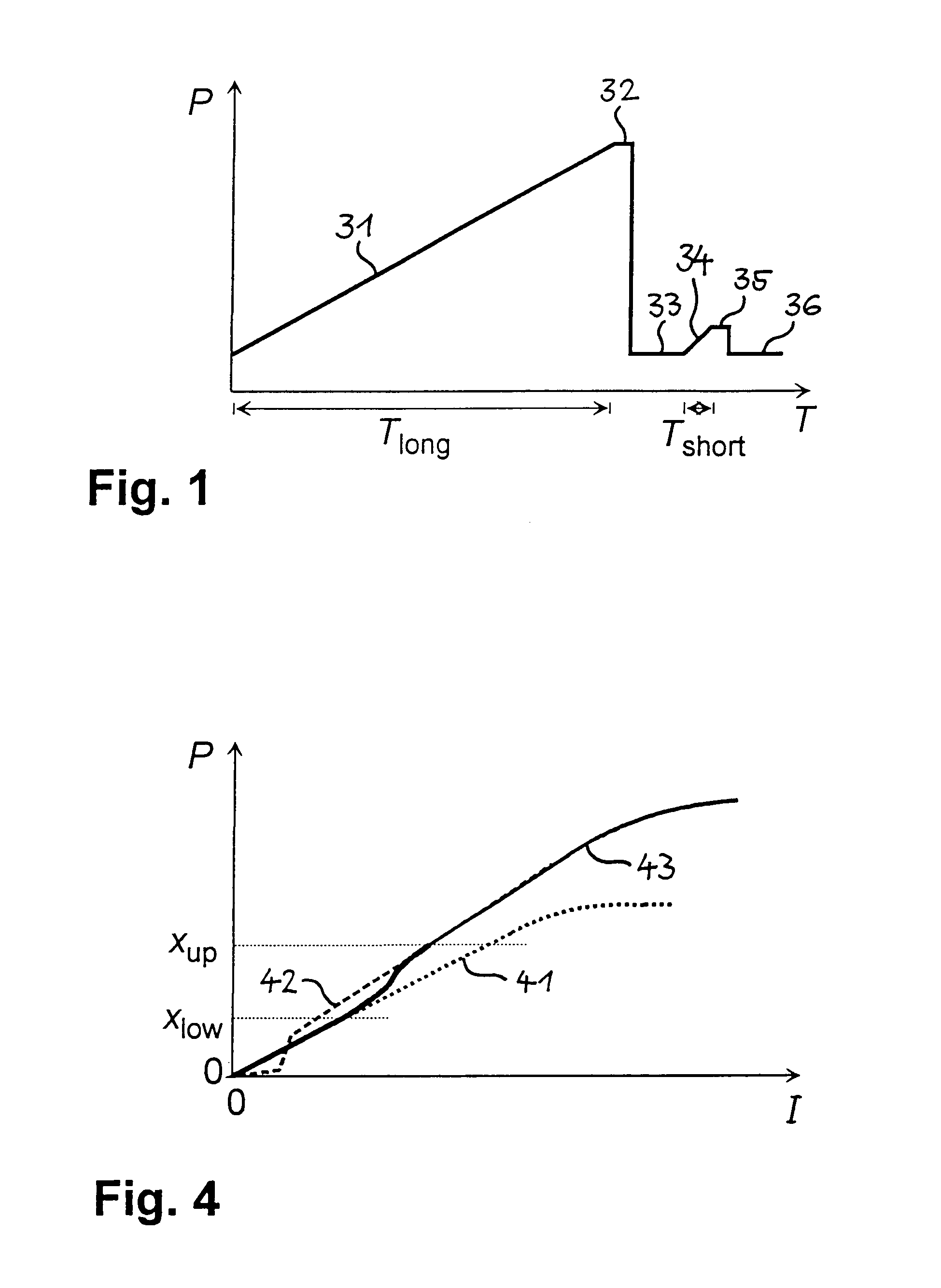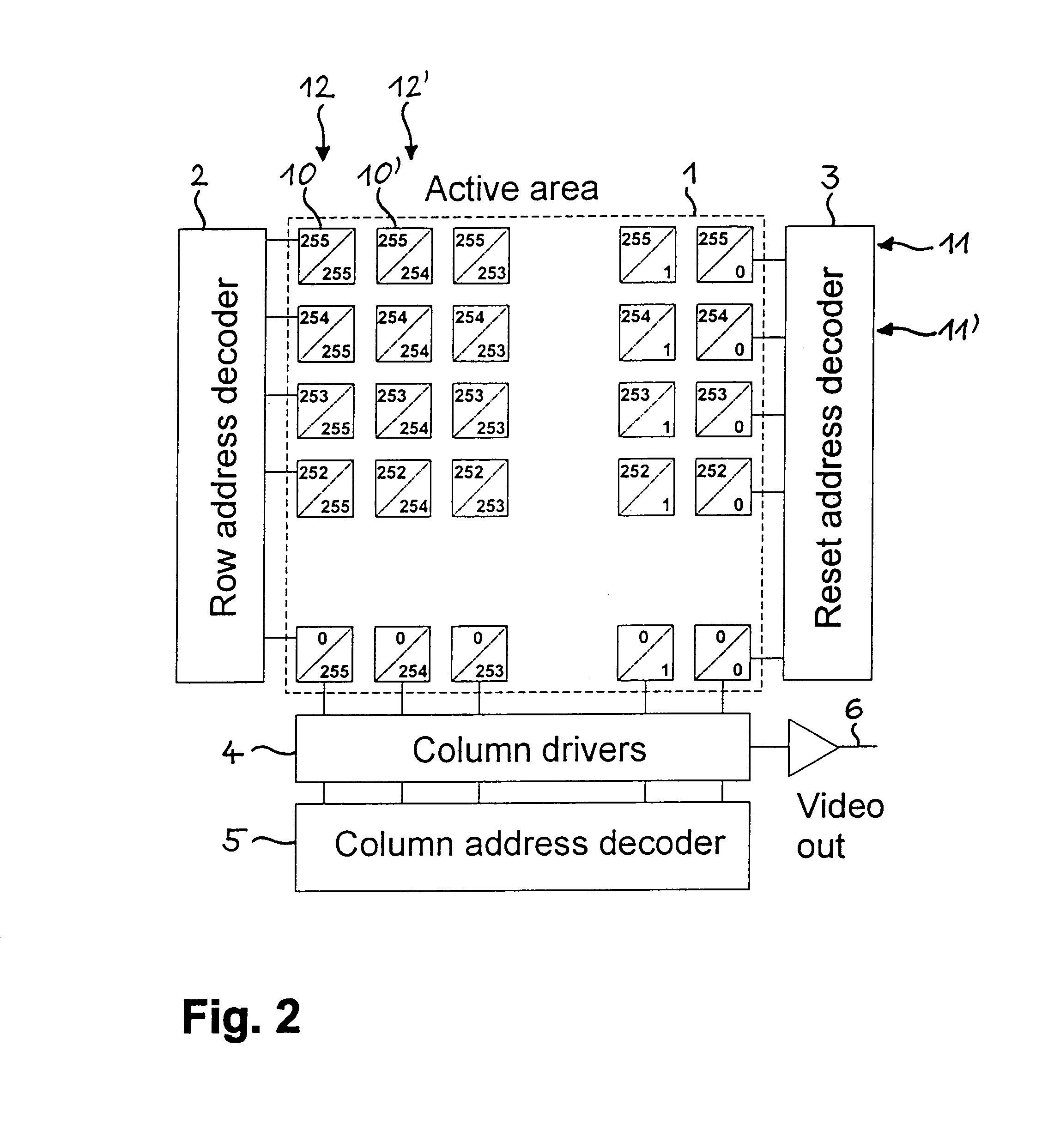Method and device for forming an image
a technology of image sensor and image sensor, applied in the field of methods and devices for forming images, can solve the problems of limited dynamic range, method exhibit undesirable temporal aliasing, and complex and cost-intensive systems, and achieve the effect of significantly increasing the dynamic range of image sensors
- Summary
- Abstract
- Description
- Claims
- Application Information
AI Technical Summary
Benefits of technology
Problems solved by technology
Method used
Image
Examples
Embodiment Construction
[0039]FIG. 1 schematically shows the output P of one given pixel as a function of time T in the method according to the invention. The figure illustrates an example in which two exposures, a first exposure 31 with a long exposure time Tlong and a second exposure 34 with a short exposure time Tshort, are performed on each subset of pixels. After the first exposure 31, the pixel output value is read out 32 and reset 33 for a first time. A second read-out 35 and, optionally, a second reset 36 are performed after the second exposure 34. Then, the pixel is ready for a further interrogation cycle. Of course, other variants of the method are possible in which, e.g., the first exposure time is shorter and the second one is longer, or in which more than two exposures are performed in one interrogation cycle.
[0040]FIG. 2 shows a schematic of the architecture of an image sensor suited for carrying out the method according to the invention. In this exemplified embodiment, the image sensor has a...
PUM
 Login to View More
Login to View More Abstract
Description
Claims
Application Information
 Login to View More
Login to View More - R&D
- Intellectual Property
- Life Sciences
- Materials
- Tech Scout
- Unparalleled Data Quality
- Higher Quality Content
- 60% Fewer Hallucinations
Browse by: Latest US Patents, China's latest patents, Technical Efficacy Thesaurus, Application Domain, Technology Topic, Popular Technical Reports.
© 2025 PatSnap. All rights reserved.Legal|Privacy policy|Modern Slavery Act Transparency Statement|Sitemap|About US| Contact US: help@patsnap.com



